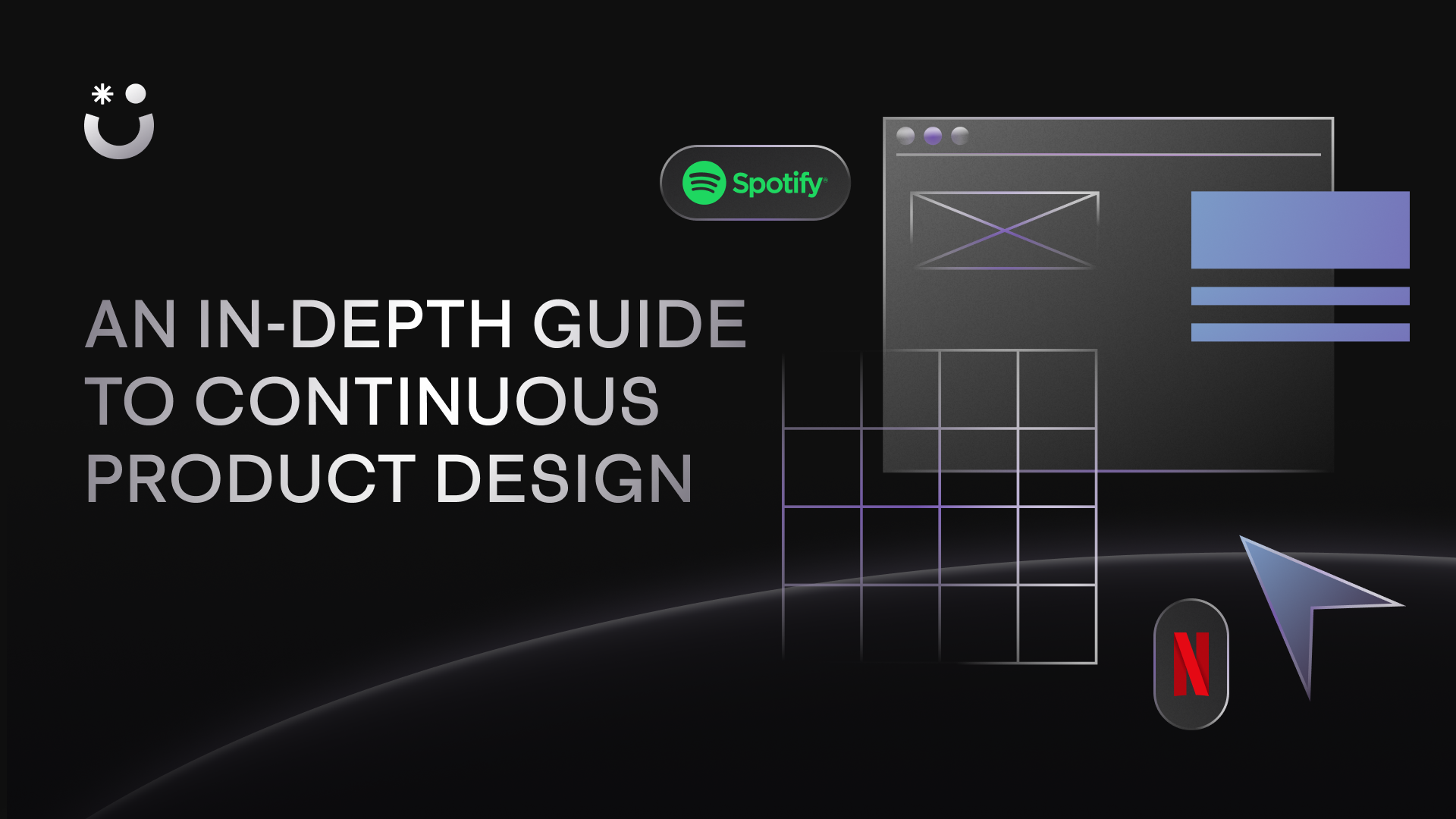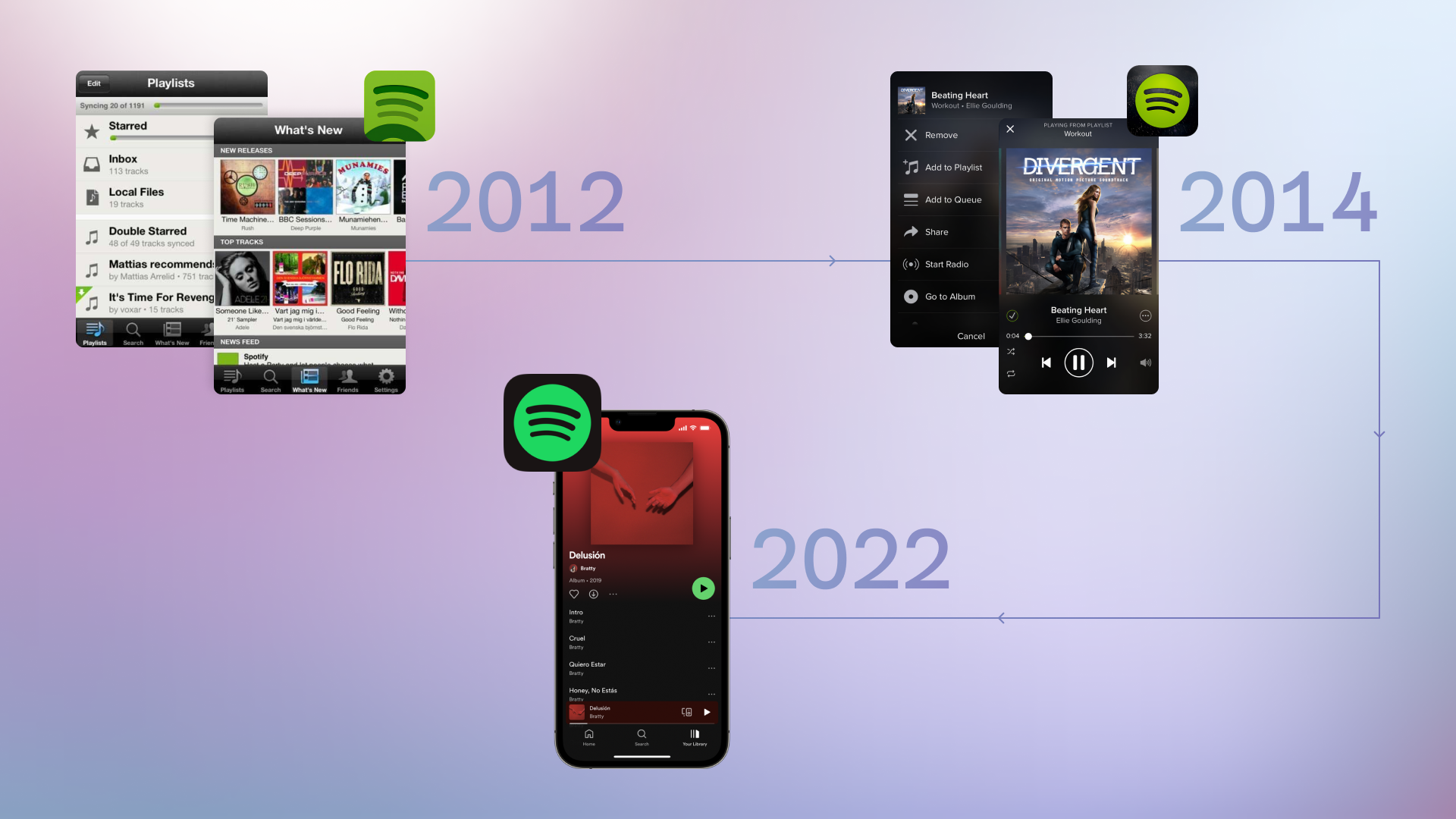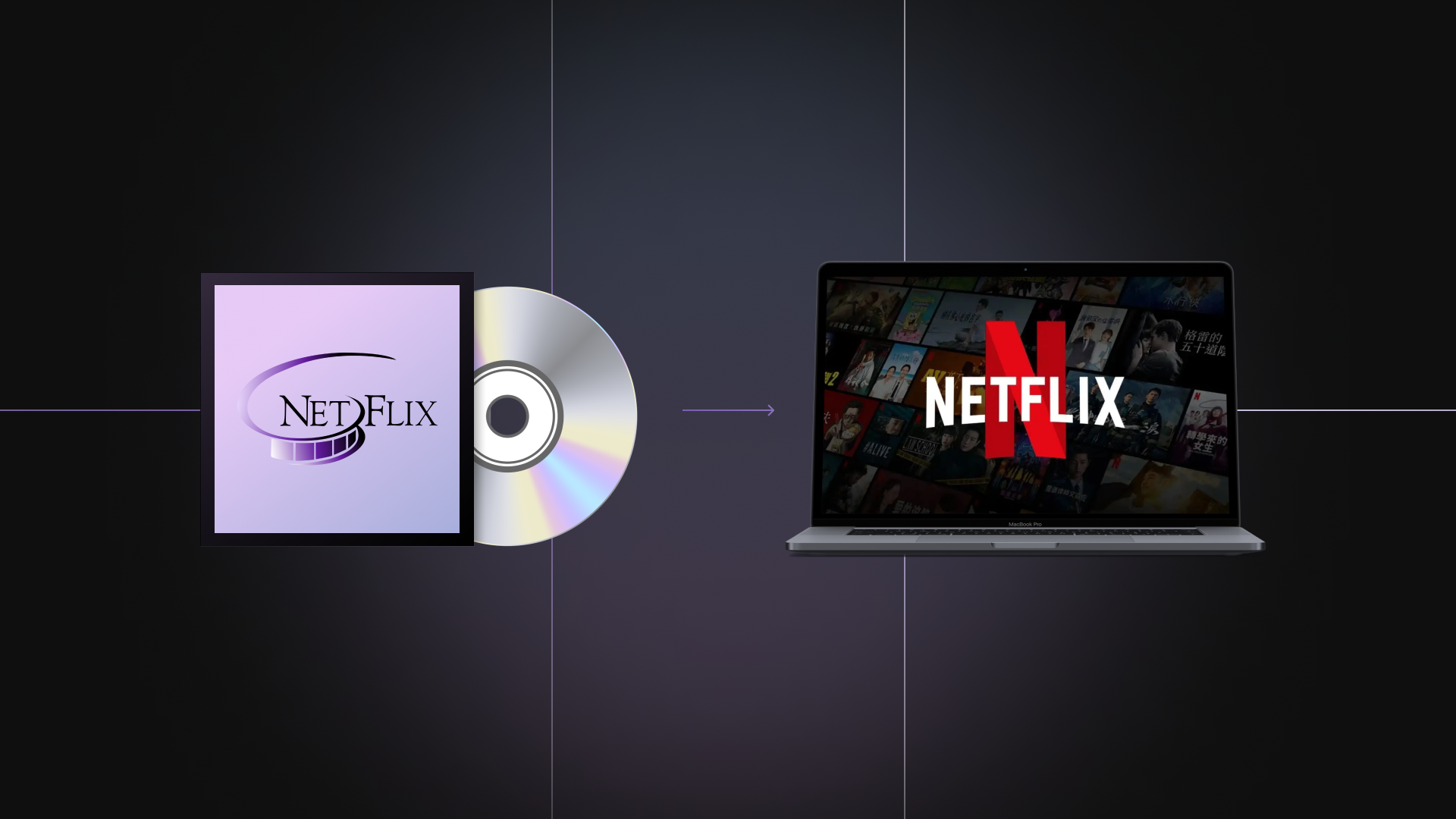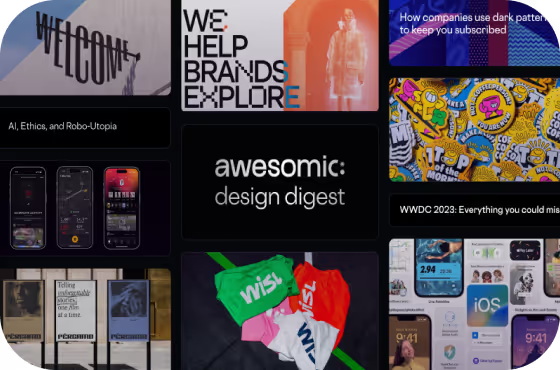An In-Depth Guide to Continuous Product Design


Developing exciting products and solving users’ problems can be challenging, especially in this modern, fast-paced environment where customers’ needs always evolve, and the market is getting increasingly competitive every single day.
So, what are the best practices to stay ahead of the loop and beat the competition?
Let’s face it – happy customers are the lifeblood of a successful product. In fact, according to the research from Khoros, roughly 83% of the customers say that they feel more loyal to brands that resolve their complaints.
Taking the continuous product design approach helps you address exactly this problem – it’s a customer-centric strategy that involves constantly gathering feedback and offering new iterations of your product rapidly.
In this article, we will dive deep into this topic and tell you all about continuous product design, its benefits, and the ways to successfully implement this strategy into your processes.
What Is Continuous Product Design
Simply put, continuous product design refers to an iterative process of product development that heavily relies on customer feedback and industry demands.
It’s all about gathering feedback from customers, conducting a thorough data analysis, and improving the product with a step-by-step approach based on the insights you get from your user’s response.
This way, your product development team has the ability to learn about customer behavior from real-world usage and rapidly implement improvements that are aligned with your user’s needs.
A general framework of the continuous product design process involves coming up with an idea of the product, creating its basic version, and offering it to the public for usage. After this, you must collect their initial feedback and start implementing improvements based on their insights for the next iteration of this product.
It creates a feedback loop between you and your potential customers that helps you to improve your product in an efficient manner and build a solution that is aligned with your audience’s needs.
Importance of Continuous Product Design
When it comes to gaining a competitive advantage in an oversaturated market, it is essential to make sure that your product remains relevant for your core audience.
A continuous product design approach helps you to solve this problem – by constantly looking out for feedback from your users and offering them new iterations from time to time, you will have up-to-date insights from your customers about potential updates needed to enhance your product capabilities.
As a result, your product meets the customer’s needs at all times, giving you a comfortable position to stay ahead of the competition.
At the same time, this approach helps you to significantly accelerate the time to offer new features to your users. Rapid communication with customers helps you quickly validate ideas and reduce lengthy processes for development.
The Continuous Product Design Process
Properly implementing the continuous product design into your processes requires a strategic approach. There are a few key stages that go into these processes, which lay the foundation for a sustainable approach.
The key steps to get started with continuous product design include:
- Take a Moment to Evaluate Your Current Development Process
Firstly, it is important to take a closer look at your existing ways of working and map out all of the inefficiencies and potential areas of development for the future.
Proper identification of pain points will help you evaluate the effectiveness of the different tools you are using and have a clear understanding of what are the parts that need to be optimized for the future.
- Assemble a Diverse Team Around the New Approach
Having a cross-functional team to execute the continuous product design approach will ensure streamlined communication and diverse perspectives around the project.
Make sure to involve developers, designers, analysts, and other professionals and encourage them to share their insights from their respective areas of expertise within the company.
- Set Clear Goals and Metrics
Another crucial element for building a proper continuous product design process is about defining what success means for the product. For that, you should make sure to set the appropriate goals and metrics for the team so they know what to aim for.
It is important to keep in mind that the goal you set must align with your overall objectives and KPIs.
- Make Sure to Provide a Team With Necessary Tools
Research and select tools that support the team with the overall process of continuous product design. Take a closer look at the data and understand which actionable insights are the most important to work on.
After going through these steps, you have laid the foundation for successfully taking the continuous product design approach, which allows you to work on your product development in an iterative and collaborative way.
If we take a closer look into these steps, we can see the role of agile development in a continuous product design approach.
Being agile with the process allows you to work in a collaborative way and enables you to respond quickly and efficiently to changes in order to create high-quality products that customers love – it is a switch from a more linear approach to being more iterative with the process.
Benefits of Continuous Product Design
Companies worldwide see many benefits from taking the continuous product design approach in their processes.
The most prominent advantages that this approach brings include the following:
Enhanced User Experience and Customer Satisfaction
A continuous product design approach helps companies learn all about how users interact with their product, which features are the most effective, and what pain points they have throughout the whole user experience.
Based on these learnings, companies can improve the way users experience their products and bring more satisfaction to customers through the rapid improvements they make.

Faster Product Iterations and Improved Time to Market
It is important to understand that continuous product design means making rapid iterations based on customer feedback. This automatically shortens the development cycle, making the whole process more efficient and result-driven.
This way, companies have a flexibility to incorporate new features in an effective manner, which results in gaining competitive advantage and attracting more leads towards the product.
Increased Customer Engagement and Loyalty
Generally, when companies listen to their customers and improve their products based on the feedback, it increases the loyalty towards the brand and boosts their customer engagement rate.
Increased engagement leads to better alignment with user expectations, which helps companies turn their visitors into loyal customers and create positive perceptions about their brand.
Implementing Continuous Product Design
If you are considering bringing a continuous product design approach into your company, there are a couple of aspects to keep in mind.
Firstly, it is important to keep in mind the cultural and organisational considerations for adopting this strategy into your everyday processes. Encouraging experimentation and learning approach will be a crucial step to create a culture of agility within the team.
At the same time, you must enable the cross-functional product teams and include professionals from different fields of expertise to contribute to this project. For that, you must have a great mix of product managers, developers, designers, and marketing specialists on the team.
Another key principle for implementing continuous product design within a company is about setting up proper feedback channels where customers and other stakeholders can easily communicate with you.
It is a common practice for companies to use their social media channels for this purpose. However, depending on your product user profile, you can create customer surveys or feedback widgets, where prospects will have an option to properly communicate with you.
The most common challenge in implementing continuous product design is choosing the right tools to set up the process. For that, it is essential to have a mix of project management tools, prototyping tools, and data analytics platforms.
Case Studies: Successful Continuous Product Design Examples
There are countless examples of companies worldwide successfully using the continuous product design approach. Learning from their examples can provide valuable information on how to properly implement this strategy.
Let’s have a look at the world’s leading companies using the continuous product design approach in action:
- Example 1 – Spotify:

Spotify is a global leader when it comes to music streaming services. Therefore, it is crucial for them to understand their everyday user’s needs and provide services that are up-to-date with the current trends.
In order to achieve this, the company regularly makes sure to collect feedback and understand their customer’s preferences in their user experience.
More specifically, Spotify launched its own community platform on February 8, 2012. This is a place where the product team has a direct interaction with customers to understand more insights about their experience on the Spotify platform.
Throughout the process of listening to their customer needs and analyzing feedback, Spotify managed to roll out different iterations over time and build a platform that the audience loves and cares about.
As a result, their team is quick to create and test new features, and offer new iterations with the clear goal in mind – to understand which approach is the most effective for their music streaming application.
- Example 2 – Netflix:

A subscription-based streaming service, Netflix, is known to have a data-driven approach to constantly improving and adjusting its service based on the feedback the team receives from their customers.
Most notably, they conduct A/B testing on their features, which allows them to understand their customer’s search patterns, viewing habits, usage of functionality, and more.
Andy Glover, the Director of Delivery Engineering at Netflix, claims that their value is facilitating the speed of innovation.
He believes that many companies want to move fast, but it is an absolute necessity to have observability in the process. On one hand, you can take a software package and put it into production quickly, but on the other, you should recognize that it may break or customers may not enjoy the experience.
To explore that, you need to have great observability in the process – so, Netflix’s philosophy is all about moving fast and responding to the signals. Their key to success is their ability to create feedback loops that help them identify the areas of improvement.
This way, Netflix always makes sure to stay ahead of the competition, and improve user engagement and satisfaction. Platform’s recommendation algorithm is a great example of this iterative approach.
Tools and Techniques for Continuous Product Design
When we talk about the best techniques for executing the continuous product design approach within the company, we should keep in mind the two major components of this strategy – creating customer feedback loops and generating data-driven insights.
Gathering and incorporating user feedback is the first part of the equation. This is where you should identify the most comfortable ways for your customers to communicate with you and leave their feedback.
You can leverage various mediums for this, including email marketing, social media, online surveys, and more.
Another important part of this process is all about using metrics and analytics to make informed product decisions. The challenge here is to choose the right tools and technologies to get accurate data and make informed decisions based on the feedback.
Most commonly, professionals tend to use tools like Google Analytics, Hotjar, Adobe XD, Sketch, Jira, and others.
How Can Awesomic Help
To sum up, taking a continuous product design approach ensures that your company builds a close relationship with the customers and stays ahead of the competition at all times.
This strategy can help you build trust, enhance the overall user experience, and create a constant feedback loop that gives you ideas and directions on improving your product and generating the best results.
In order to successfully achieve this, you must have competent talent in the team that is able to execute your plan.
Awesomic is here to help! Our platform helps you get matched with the top talent you need to execute your projects.
One subscription and your hiring problems solved


FAQ

Awesomic is a revolutionary app that matches companies with vetted professionals across 30+ skill sets, from design and development to marketing and product. Based in San Francisco with a global core team, we offer a faster and more flexible alternative to traditional hiring through a subscription-based model. Awesomic delivers high-quality talent on demand, without the delays of recruiting.

We function as a subscription-based service that matches you to top-tier, vetted talent. Submit a project in just a few clicks and start receiving deliverables in as little as 24 hours. Scale your Awesomic plan up or down as your business needs change.

Every Awesomic subscription comes with unlimited revisions. You receive daily progress updates via the app, and you can provide feedback or request iterations as needed. If your project requires a different approach, you can request a talent rematch at any time, at no extra cost. You can also add teammates to collaborate and streamline feedback

A talent marketplace is a platform that utilizes data and intelligent matching algorithms to connect professionals with projects based on their skills, experience, and availability. While often used internally by large companies, Awesomic applies this model at scale, matching vetted global talent to your most critical business needs.

Hiring is time-consuming, expensive, and risky. Awesomic eliminates that problem. We rigorously vet all talent for technical ability, communication, and soft skills, ensuring only senior-level professionals work on your projects. You skip the job posts, interviews, and delays, and get straight to results.

No, Awesomic goes beyond design. While many clients utilize us for branding, UI/UX design, or motion graphics, we also provide vetted talent in no-code web development, product design, marketing, and more. Think of us as an extension of your team. A flexible, high-performing creative partner from planning to execution, whether you're building awesome products or scaling your team.

You can talk directly with your matched talent via the Awesomic app, connect via Slack, email, or schedule video calls. No matter the plan, you’ll receive daily updates in the app for every active task. You can also tag us in for any issues through our in-app customer chat.












